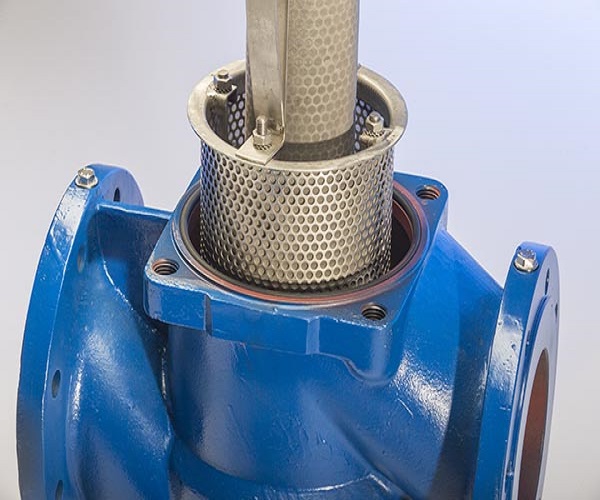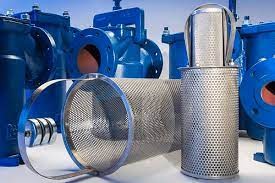
BCST has become the top manufacturer of flow meters and strainer filters in china in the last 21 years; Jiangsu group co Ltd established this company in 2000. This company has a speciality in developing high-quality products like control valves, butterfly valves, flowmeter, pressure transmitter and temperature transmitter, and of course strainer filter.
BCST is an internationally recognized company, and it exports its high-quality products in one hundred countries, and they are considered the company’s top brand internationally. BCST manufactures its unique products by deep research and passing through strict quality control.
When you need a strainer filter, you need to keep in mind so many things, but at the same time, you should have several questions.
Here are the answers and details about all questions regarding the Strainer filter.
What is a strainer Filter?
Industries use strainer filters to remove undesirable particulates and debris from the flow; when the debris like rust or scale and other materials mix with water, gas, oil, air, etc., it flows through a pipeline. It can create problems and can cause damage to the channel. And thus pipeline will no more be able to work correctly. Hence, the right strainer filter is essential to protect costly equipment like control valves, flow meters, steam traps, etc.
So you can say a strainer filter valve is a pipe fitting from which you can pass for purification. You can separate solid from liquid with the help of a strainer filter valve, and solid bodies cannot mix up with fluids because of the strainer filter. So it will help you maintain your pipeline systems for a long-term duration.
What are different types of strainer filters according to their body configuration?
There are two main types of strainer filter valves according to their body configuration:
- T- type or basket type:
- Y-type strainer filter valves- type or basket type
Y-type strainer filters
You can primarily use a y-type strainer filter valve is in pressurized lines, like liquid and gas. You can also use them in suction conditions. You can fit Y-type strainer filter valves in applications that expect fewer solids. If you flush the screen very quickly and, and if you exhaust liquid into the atmosphere. Then a blow-down valve on the drain port area will allow cleanout; it will not interrupt the flow process because you can clean the flowing liquid without removing the screen with the help of a strainer filter valve.
You can fix a y-type strainer filter valve in horizontal and vertical positions. But in both cases, the suppressing must be on the downside of the strainer filter valve body so that the strainer filter can collect debris appropriately in it.
In steam or gas pipelines, you should fit y type of strainer filter valve in such a manner so that the pocket is in the horizontal plane. With the help of this position, you can stop water from collecting in the bag and hence prevent erosion and heat transfer process. In the liquid system, you should fit the pocket vertically to separate the debris you have removed. From the liquid during low pressure of flow passing through strainer filter valve.
It would be best to fit the strainer filter valve in horizontal pipelines. But you cannot expect horizontal channels every time; you can also expect vertical pipelines to install the strainer filter valve where the flow is downwards and naturally collected into the pocket.
When you purchase a y strainer filter valve for your pipeline system, always check the size of the valve because some strainer filter v manufacturer companies reduce the size of y- strainer filter body to save the material and cost. So never compromise on your y strainer filter valve’s quality because a low standard valve means an undersized unit.

T- type or basket type:
T type or basket type, or you can say pot type strainer filters are vertically oriented chambers. This strainer filter valve is usually larger than y type strainer filter valves. The pressure level is more in y type strainer filter because T-type pressure filter valves have more space for liquid to flow through. So you should prefer a basket-type strainer filter because it has more great dirt holding ability and space then y type strainer filter valves. You can also use them in large steam pipes.
You can only install This type of valve in horizontal or straight pipelines. You can also remove the cover of the basket-type strainer filter for service purposes and clean the filtering area of the basket-type filter valve. When you fit a basket-type strainer filter in a steam piping system, then with time, a large amount of condensate is formed. So mainly, the strainer filters used for this purpose have a drain plug to remove condensate.
What is most commonly used for strainer filters?
Commonly used materials for y- type strainers and basket strainers are iron, bronze, carbon steel, stainless steel, and plastic. Let’s check these materials in detail.
Cast iron material:
It is a trendy strainer filter valve material because its cost is meagre. You can use it in a system where the temperature and pressure of water are not very high; commonly, you can use it in a large-sized water pipeline system. You can also use it in most non-portable water systems and other products.
Bronze material:
You can use bronze for brackish, saline, and seawater service. But it is different from cost iron because its cost is double the cost of cost iron. So it is costlier material than cost iron.
Carbon steel material:
You can use carbon steel material for the strainer filter valve in a system that requires high temperature and pressure conditions and mechanical and thermal shocks.
Chrome –Moly steal:
Chrome-moly material is the best for a strainer filter valve when working in high temperature and pressure conditions.
Stainless steel:
Most people love Stainless steel material to be used in the body of basket and y type strainer filters for their system because this material can work in challenging conditions, resist corrosion, and be easy to clean.






